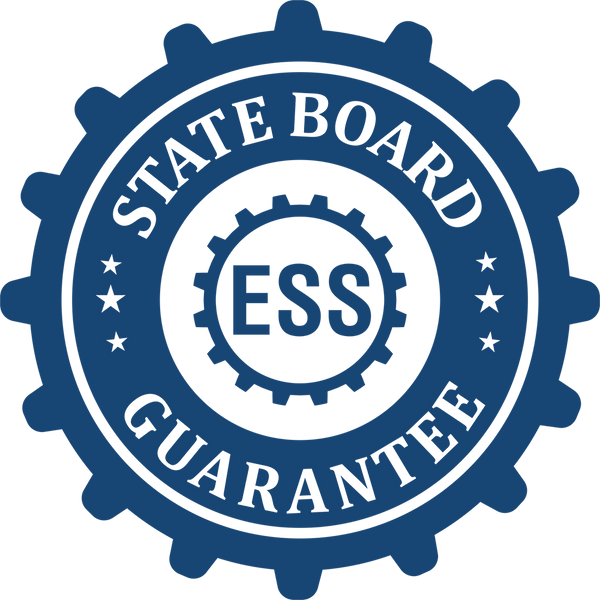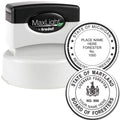If you’re a fan of geocaching, you already know how exciting it is to discover a hidden container tucked away in some clever spot. Along with signing the logbook, plenty of geocachers like to leave a unique mark that sets their visit apart. That’s where geocache stamps can be a real game-changer. They let you personalize your entries and make every geocache log distinctly yours. If you’ve been thinking about adding a geocache stamp to your kit, you’re in the right place. Below, you’ll find all the tips you need to buy the best custom stamp online, along with some practical steps on designing, maintaining, and using your new treasure.
Recognize Geocache Stamps
A geocache stamp is a small imprinting tool you can use to mark logbooks inside geocaches. Think of it like a personal signature but way more fun. Instead of scribbling your name every time you find a cache, you can stamp a memorable design in just a second or two. By investing in a stamp specifically made for geocaching, you add a creative twist to your geocaching adventures.
Why They’re So Popular
- Speed: Stamping is faster than writing your name or username each time.
- Uniqueness: You can display a design that reflects your personality or geocaching “handle.”
- Consistency: Your stamped mark always looks the same, unlike handwriting that can vary in different conditions.
- Collectibility: Some geocachers enjoy comparing stamps from various fellow explorers to create a communal logbook collage.
How They Enhance Your Experience
When you carry a custom geocache stamp, you may feel more engaged in the process of logging finds. It becomes not just a necessary step but a highlight of the entire trip. You can try different stamp colors, interesting designs, or even add short phrases. Plus, stamping might spark fun conversations with other cachers who come across your mark in the logbook later.
Pick The Right Materials
Choosing the right material can feel a bit tricky at first. Different materials lend different aesthetic and practical benefits, so it’s worth reviewing your options. Below is a quick table comparing two of the most common options: rubber and polymer.
| Material | Pros | Cons |
|---|---|---|
| Rubber | - Durable under various conditions - Distinct, clear impressions |
- May require separate ink pad - Slightly more expensive |
| Polymer | - Creates crisp details for complex art - Great for self-inking |
- Not as rugged for rough outdoor handling - Can degrade faster |
Wood Or Self-Inking?
After you settle on rubber or polymer, your next call is whether you want a classic wood-mounted stamp or a more streamlined self-inking setup.
Wood-Mounted Stamp
Traditional, with a nostalgic feel.
You’ll need a separate ink pad, so it’s one more item in your geocaching bag.
Often less expensive than self-inking models.
Self-Inking Stamp
Built-in ink pad, so no separate pad required.
Slightly bulkier design.
Seals away the ink to prevent dryness and leakage when not in use.
If portability is at the top of your wish list, you might lean toward a compact self-inking stamp. But if you prefer a classic approach or you just like using different inks, you may enjoy using a traditional wooden stamp.
Consider Design Factors
Before you place an order, think carefully about the design. When it comes to geocache stamps, the idea is to make something that captures your style while still being readable in a small footprint.
Size And Shape
You’ll usually find stamps ranging anywhere from 0.5 inches to 2 inches in diameter or length. Smaller stamps fit into tight logbooks without overshadowing other stamps, while bigger stamps let you include extra details.
- Too Big: Could overwhelm smaller logbooks and take up too much space.
- Too Small: Might be harder to read, especially if you want to display text along with an image.
Art And Text
Some people opt for just text, others prefer a small graphic element or a mix of both. If you’re mixing text and art, make sure you choose a legible font so that it shows up clearly even at a reduced size.
- Use simple fonts if you plan to include your geocaching alias or a small phrase.
- If you’re adding an image, keep the design clean and uncluttered.
- High-contrast artwork yields crisp imprints, so avoid shading or intricate details that might blur.
If you’d like more insight on geocache stamp features, you can check out geocaching stamp for additional considerations on style and functionality.
Look For Quality Service
Ordering a stamp online isn’t just about picking the coolest design, it’s also about ensuring you get a quality product that arrives quickly and accurately. One of the big factors you’ll want to check is the reputation of the company selling the stamps.
Check Customer Reviews
Genuine testimonials are your secret weapon for gauging reliability. See how previous buyers rate the stamp’s durability, whether the color smudged, and how the seller handles any issues.
- Search for comments on how long the impressions last.
- Look out for mentions of communication or problem resolution.
- Notice if multiple buyers highlight the same pros or cons.
Evaluate Shipping And Returns
Once you’ve nailed down a seller, verify their shipping policies. A snail’s pace shipping window can dampen your excitement, especially if you’re prepping for an upcoming geocaching event.
- Verify typical delivery times.
- Check if a rush option is available (some shops can expedite production).
- Read the return or refund policy in case your stamp arrives damaged or not as described.
Explore ESS For Top Value
When it comes to picking a reliable source for quality custom geocache stamps, you might want to give ESS a look. ESS is a family-owned and operated provider of geocaching supplies, serving outdoor enthusiasts for 60 years. Since 1964, they’ve been a go-to spot for geocache stamps and geocaching gifts. They’re known for superb customer service, and they take pride in fast turnaround times so you can get your stamp with minimal waiting.
Why ESS Could Be Your Best Bet
- Family Tradition: With so many years behind them, they understand exactly what geocachers need.
- Streamlined Process: Their ordering system is user-friendly, saving you time.
- Personal Touch: Being a family business means there’s a unique sense of care in every order.
- Reliable Output: Stamps come precisely as requested, and the final product tends to match your design specs perfectly.
Choosing a trusted supplier like ESS can take the stress out of the buying process. Instead of wondering if your stamp will arrive on time or if the engraving is accurate, you can just look forward to testing it on your next geocaching adventure.
Review Production Timelines
Geocache stamps don’t usually take long to create, but the timeline can vary based on complexity. If your design involves multiple colors or intricate patterns, it could mean a slightly longer production step. Keep these pointers in mind:
- Typical Turnaround Time
- Some shops ship in just two or three days, others may need a full week.
- Expect quicker times if you choose standard (single-color) designs.
- Rush Options
- If you need a stamp for a last-minute trip, check if the seller offers expedited production.
- Understand that fast shipping may incur extra fees.
- Shipping Estimates
- After production, shipping length depends on where you live.
- Ask about tracking options, so you can monitor your stamp as it travels to you.
Whether you’re heading out on a geocaching weekend soon or you just want the security of having your new stamp in hand, accurate production timelines help you plan accordingly.
Check Bulk Options
If you’re a geocaching group leader or you log caches as a family, you might want multiple stamps in one go. Bulk discounts can save you money per stamp and potentially reduce shipping costs. Many shops—especially those that handle frequent geocaching orders—offer various deals if you purchase several stamps at once.
- Family Or Team Orders: Everyone can have a matching design with slight variations.
- Group Events: Perfect when coordinating large geocaching gatherings and you want a unified stamp across participants.
- Gift Packs: A set of custom stamps can make a thoughtful group gift or event souvenir.
Just remember to keep each design simple enough to ensure the end result is legible. If you have drastically different designs for each stamp, confirm whether separate templates or extra fees apply.
Maintain Your Stamp
Once you’ve got your geocache stamp in hand, a little TLC will go a long way. Proper maintenance affects how crisp and clear your stamp impressions remain over time. Here’s how to ensure you’ll keep stamping without any hiccups.
Storage Essentials
- Cool, Dry Place: Excessive heat or moisture can damage the stamp’s surface.
- Protect From Sunlight: Intense sunlight can cause the rubber or polymer to degrade faster.
- Keep It Covered: If your stamp has a protective case or lid, use it. This helps shield it from dirt.
Cleaning Tips
- Wipe After Use: Removing excess ink or dirt right away prevents build-up.
- Avoid Harsh Chemicals: A gentle cloth or mild soapy water works best on the rubber surface.
- Let It Dry Completely: Don’t store it until you’re sure there’s no moisture left, especially if you’re about to seal it inside a container.
Regular care ensures you’ll get years of use from a single stamp. You’ll also avoid ink smears on your gear if you pack it in a sealed bag or protective cover.
Avoid Common Pitfalls
Purchasing geocache stamps tends to be a smooth process, but there are a few mistakes that can derail your plans. Keep an eye out for these common pitfalls:
- Trying To Cram Too Much Detail
- Intricate logos might print as a tiny blur instead of a crisp image.
- Ordering Without A Proof
- Some sellers offer a digital preview of your stamp. Don’t skip it, or you risk getting a design that’s not exactly what you expected.
- Overlooking Ink Requirements
- If you need fast-drying ink for cold or damp climates, be sure to select it accordingly.
- Missing The Sizing Specs
- Always check the dimensions of the final product to be certain it fits into geocache logbooks comfortably.
By steering clear of these common snags, you can focus on the fun part: stamping your personal mark across a wide range of geocache logs.
Read FAQs
Below are a few frequently asked questions that might come up when you’re surfing around for geocache stamps. Feel free to reference them if you’re on the fence about specifics like self-inking options or how to care for your newly purchased stamp.
Are self-inking stamps better than wooden handle stamps?
It really depends on your preference. Self-inking stamps are convenient and less messy, so they’re ideal if you don’t want to carry an extra ink pad. Wooden handle stamps, on the other hand, let you swap out ink pads or colors easily. Plus, some folks prefer the classic look and feel of wood.Will my design wear off quickly?
With proper care, not at all. Each time you stamp, wipe off any leftover ink or debris, and store your stamp in a dry place. If it’s a quality rubber or polymer, the design should last for years. Sun exposure and rough handling are the biggest culprits of premature wear.Can I buy replacement ink pads for a self-inking stamp?
Absolutely. Many stamp retailers, including ESS, sell refillable ink pads made specifically for each stamp model. Just make sure you pick the right size and match the type of ink you need for the best results.What if I need design help?
Lots of vendors (ESS included) offer assistance if you’re not sure how to finalize your design. You can usually send them an image or rough concept, and they’ll provide guidance on how to refine it or convert it into a stamp-friendly template.
Whether you’re just starting out in geocaching or you’re a seasoned pro, having a dependable stamp adds an extra layer of excitement to every find. By focusing on materials, design clarity, and a reliable supplier like ESS, you’ll end up with a top-notch stamp that leaves a perfect impression each time. Enjoy personalizing your log entries, and don’t forget to keep your stamp in tip-top shape so you can explore more caches, make more memories, and mark your adventures with style. Happy caching!


















